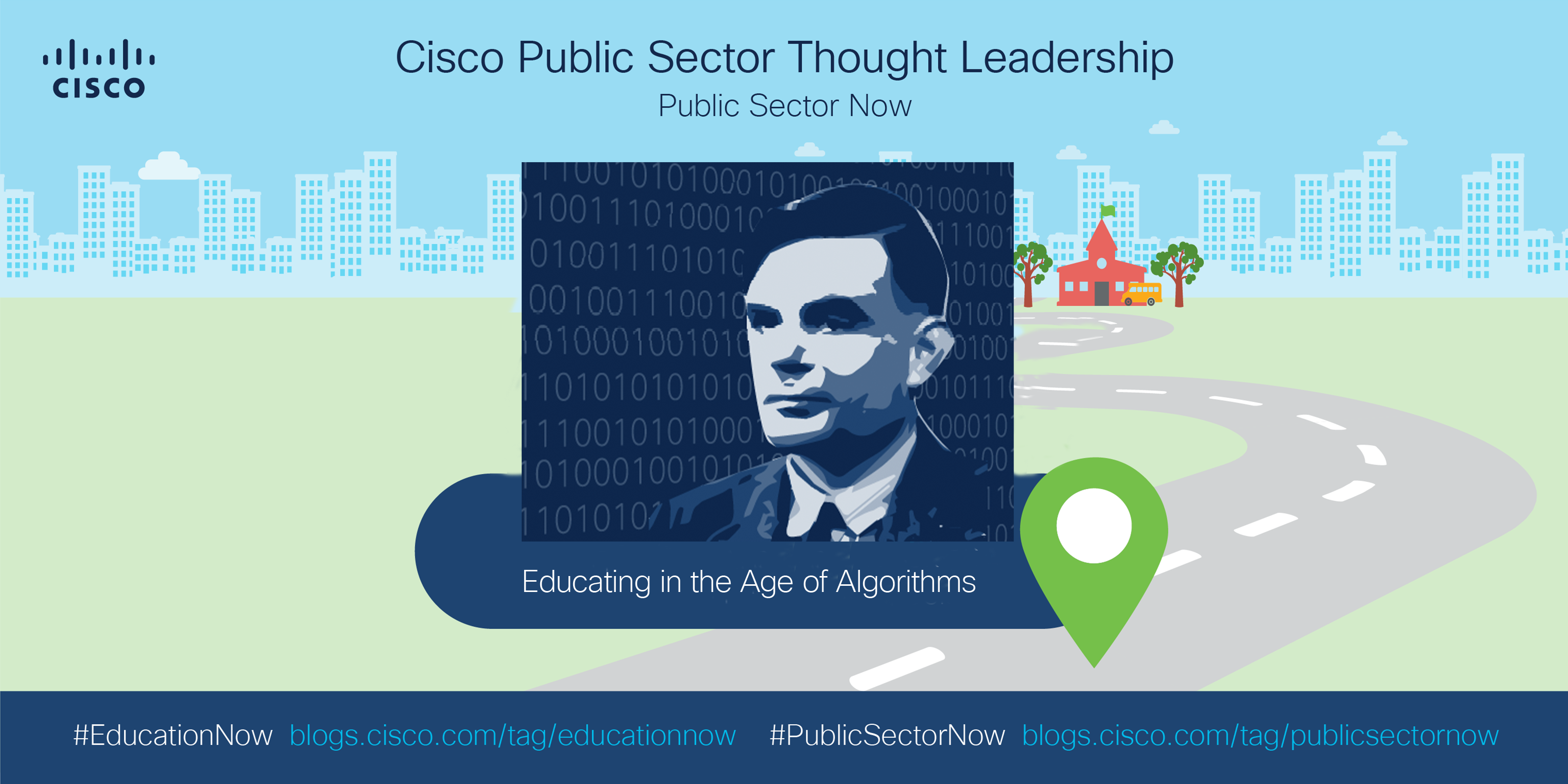Join us for a new #EducationNow blog from Ronaldo Mota, a member of the Brazilian Academy of Education. Be sure to check out his previous blogs on the Digital Vortex surrounding Education Then and Education Today.
Co-Authored with Heather Keleher
What is an algorithm?
In its simplest form, an algorithm is defined as a finite series of steps necessary to perform a task. It is a sequence of rules, logical procedures and reasoning applied, based on a set of data, to solve problems.
The modern concept of the algorithm was formulated in 1936 by Alan Turing, laying the foundation for computer science. However, the origin of the nomenclature is much older. Some attribute it to the surname of a 9th century Persian mathematician. Others derive it from a root word in Arabic: an origin also shared by the word algebra.
How does an algorithm work?
Let’s say you’re looking for an apartment to rent. You want to optimize your choices, expand your options as much as possible and minimize your choice time. At each visit without closing a deal, the risk is high that the property will no longer be available afterwards (a common phenomenon in large cities).
These particularities and specificities belong to the class of mathematical challenges known as “optimal stopping.” An optimal stop is when we have established a framework, consider that we already have enough data, and start to use that data to make decisions. Time matters. We know that, generally, it is not a good solution to seek indefinitely.
Incredibly, the dilemma above, from the point of view of algorithmic science, has a comprehensive and clear answer about the correct balance between looking (maximizing the comparative database) and deciding (defining the cutoff point, based on which one decides, avoiding excessively long times).
The answer to the balance challenge, in numerical terms, is thirty-seven percent.
Thus, the so-called “Rule of 37%” defines a series of simple steps (an algorithm, therefore) to solve the class of problems described above. It is applicable to countless daily challenges, where we deal with uncertainties, incomplete information, and time constraints.
How can we apply these lessons to technology in education today?
Today, algorithms are transforming how we educate – from leveraging automation to plan transportation routes and student schedules, to employing machine learning to deploy “prescriptive learning” that empowers students to learn at an individualized pace. By taking historic data into account, individualized learning plans help to target and address student weaknesses and elevate and expand their strengths. Teachers will spend less time on administrative tasks and more time innovating education outcomes as algorithm-powered tools auto-grade homework, assignments, and assessments.
Schools from New York University to Massachusetts Institute of Technology to Carnegie Mellon University are investing in AI college degree programs and partnering to form labs to develop AI startups and fill the AI talent gap. Schools will also roll out algorithm-powered learning models to help students develop new skills that will enable them to stay ahead of a changing job landscape.
Entering the Age of Algorithms
Some say, we are entering an “Age of Algorithms.”
Algorithms do and will continue to define how we learn, teach, make decisions, run businesses, develop strategies, discover information, run countries, interact with friends, and read the news. Today, algorithmic technology underlies the core functioning of our society.
The questions we may ask about this transition are countless.
Will the proliferation of algorithms diminish or improve human critical thinking capabilities? Will it make us better decision-makers or hinder our development? Will machines make humans irrelevant?
As such, it is critical that we understand algorithms and leverage them as a force for good. In a torrent of information, we must ensure that our systems are unbiased, fair, and – above all – secure. And as we form a generation of learners who are empowered by algorithms, it is also our role to give them an understanding of the algorithmic foundations of our world through “information literacy” and critical thinking education. Even more-so, incorporating cross-disciplinary collaboration into coursework to empower students to navigate vast sums of information will prepare them for an increasingly digital world.
Today, we do live in an Age of Algorithms – one likely unimaginable to Turing when he developed the modern algorithm less than one hundred years ago. Now, it is up to us to ensure this age is inclusive and secure.

How are you empowering your students to survive, thrive, and prosper in the Age of Algorithms?



This is great.